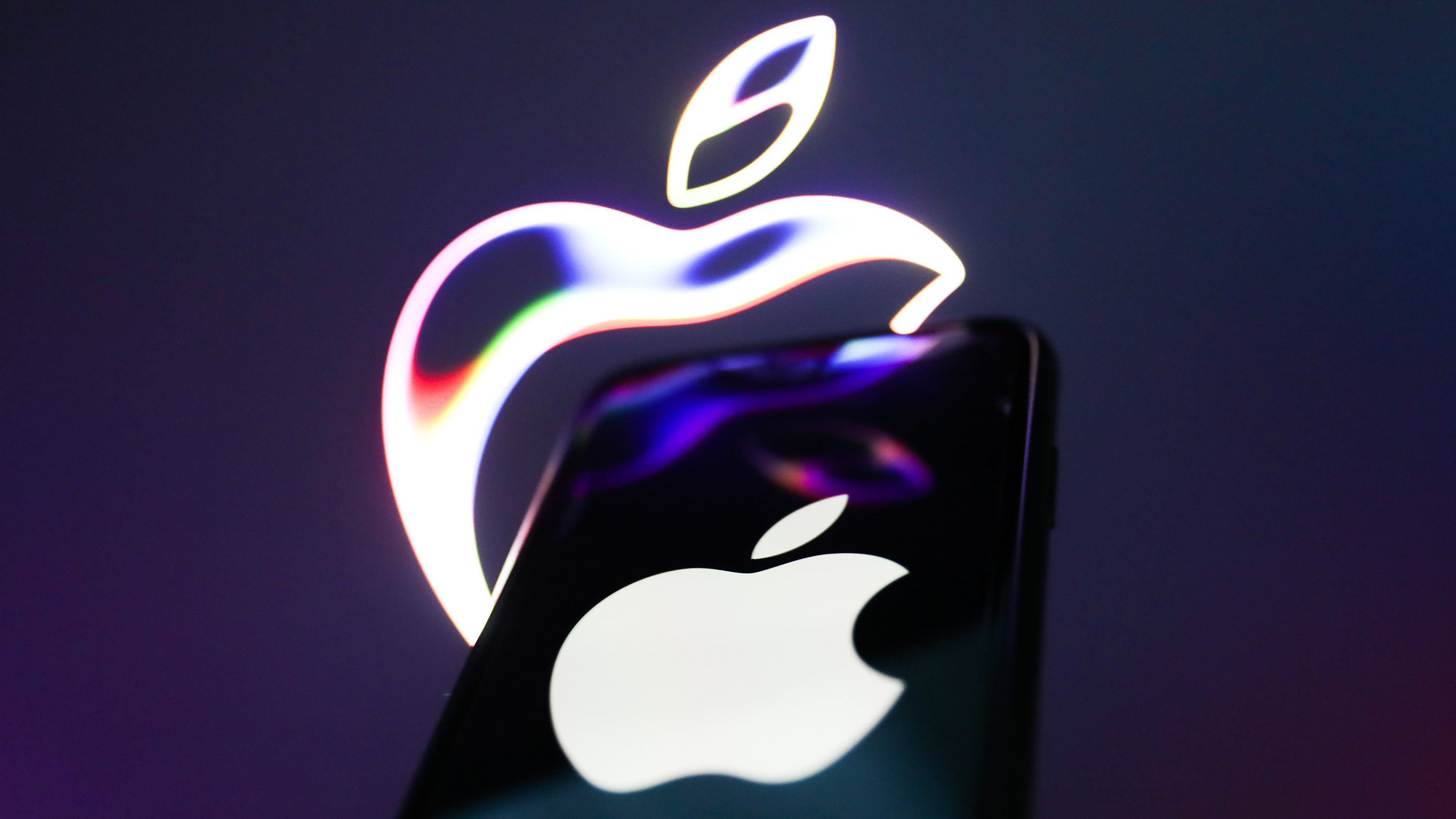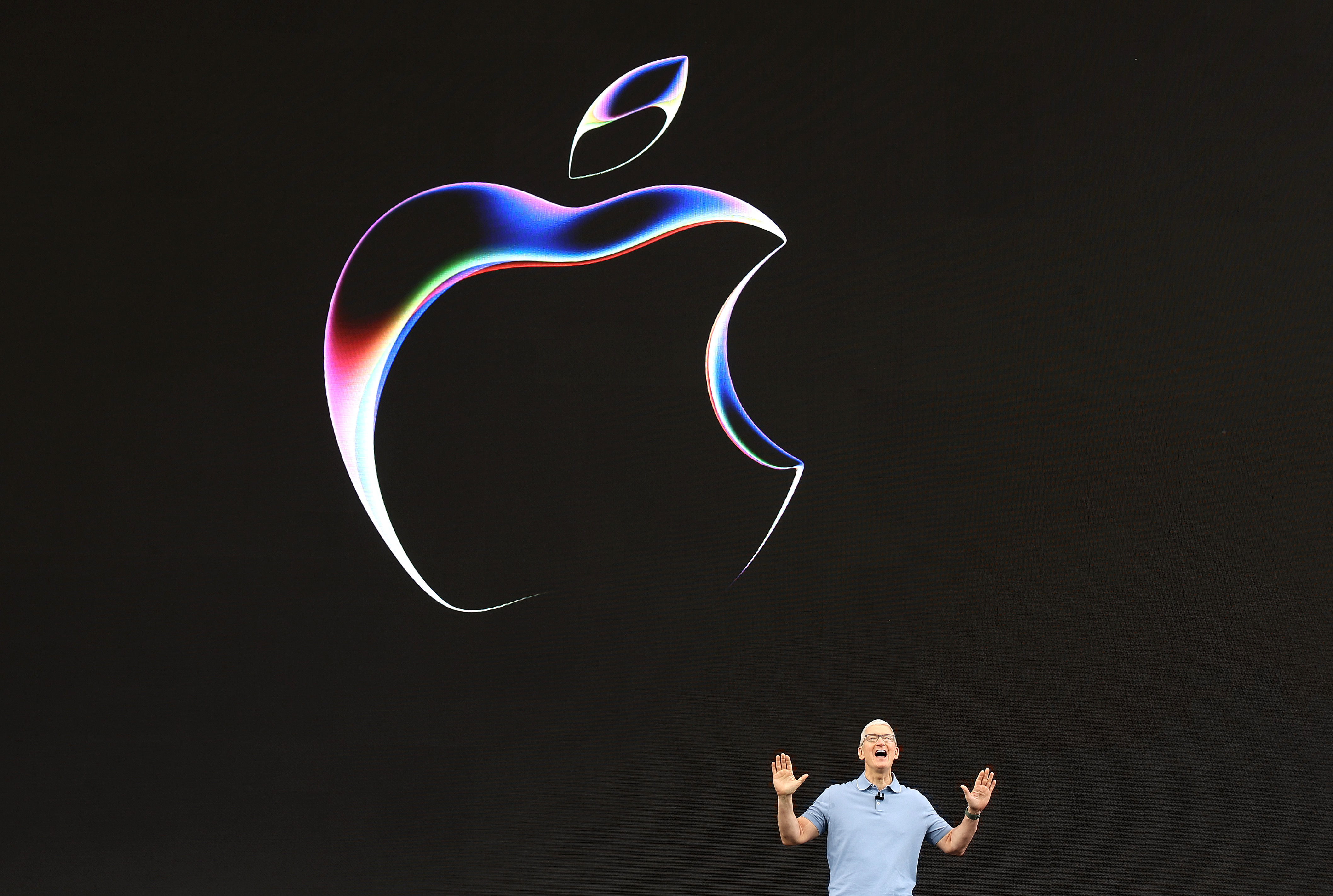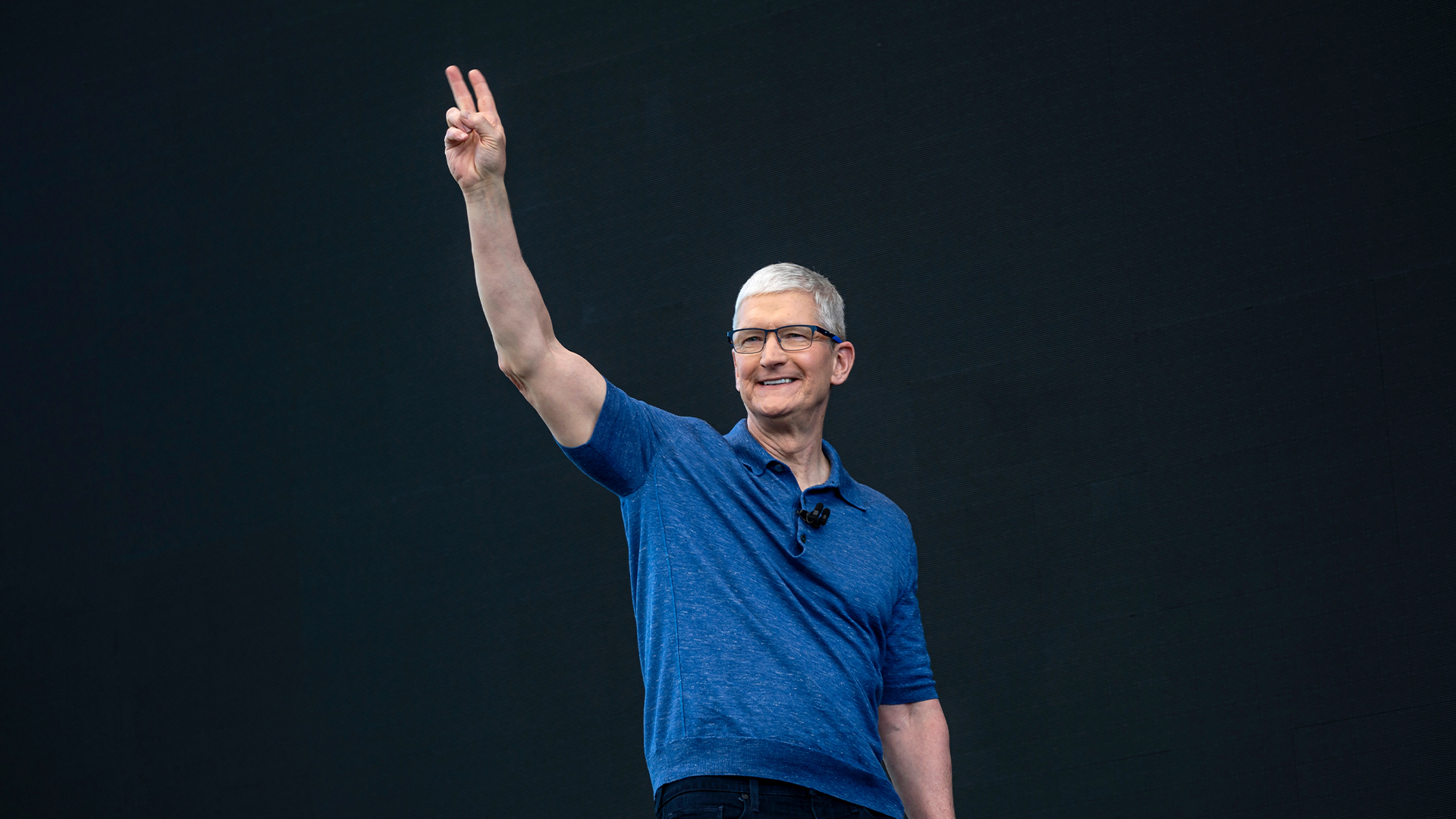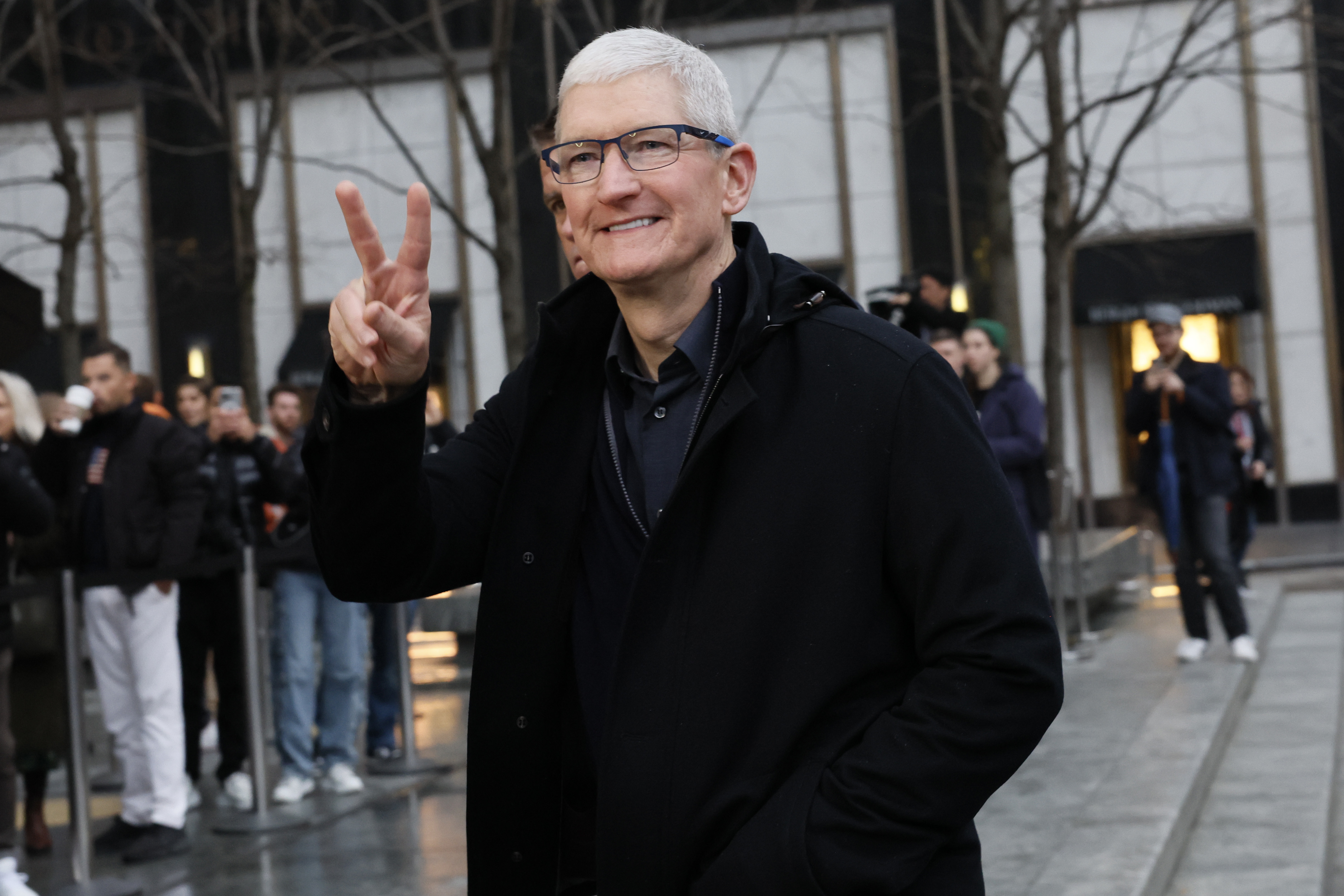Why Apple’s generative AI plan may see it abandon its closed-shop approach
The last big tech AI holdout is keeping its cards close to its chest


With Apple intensifying its investment in generative AI, the tech giant looks to sell its own spin on the technology that has gripped the industry this year.
Speculation has mounted in the wake of the firm’s Q3 results, which revealed that Apple has increased R&D spending by around $3 billion in FY23 so far, compared to the first nine months of FY22.
The firm has avoided speaking on the subject directly in most of its major announcements, though it has addressed the growing need for locally-run AI models through its in-house silicon.
It’s widely expected that Apple will reveal its own approach to AI in the coming months, as it looks to consolidate its position as a provider of cutting-edge technology.
Apple CEO Tim Cook has suggested that the increased spending was in part due to ramped-up AI, telling Reuters that the firm has been investing in generative AI “for years”.
In an interview with CNBC, Cook explained that the firm is looking to implement generative AI capabilities throughout its product offerings.
“We view AI and ML as fundamental core technologies. And they are virtually embedded in every product that we build,” he said.
Sign up today and you will receive a free copy of our Future Focus 2025 report - the leading guidance on AI, cybersecurity and other IT challenges as per 700+ senior executives
Annette Zimmermann, VP analyst at Gartner, told ITPro that as generative AI is an umbrella that includes large language models (LLMs), generative adversarial networks, or diffusion models, Apple has a range of options for implementation including improvements to Siri.
“Siri could then conduct more complex tasks such as creating text summaries of news or increase the conversational capabilities of Siri by adding short-term memory,” Zimmermann said.
RELATED RESOURCE

AI for customer service
Gain insight into the conversational AI landscape. Learn about three common use cases and customer pain points from real-world success stories.
“There are ChatGPT plug-in tools that do exactly that with ChatGPT - so that the AI ‘remembers’ what I asked it a few minutes before in a conversation. This, and further enhancements, would increase Siri’s effectiveness and user productivity significantly.
“When Apple introduced Vision Pro they placed much emphasis on enterprise use cases. I think this will be the place where Apple will leverage gen’ AI technologies to enable more use cases. And Apple is already using generative AI here, for example, with the function that creates your personal avatar from your face scan.”
Zimmermann pointed out that Apple is likely using synthetic data - generated by an algorithm based on original data - to train its models rather than using harvested user data.
Given the firm’s public commitment to user privacy, it is likely that any Apple AI product will emphasize this training methodology and other privacy protections to draw a line between it and competitors like OpenAI.
Apple and AI: Trademark timing

Apple is the last of the ‘big five’ to publicly announce a foray into AI. So far, we’ve heard little more than the unconfirmed reports of an internal LLM, which if realized would put it in direct competition with other notable models such as Google’s Bard or Microsoft’s Bing AI.
The firm’s biggest announcement in 2023 so far came at Worldwide Developers Conference (WWDC23) in the form of its new mixed-reality headset, the Vision Pro.
It represented a doubling down by Apple towards metaverse technology, which had been much touted as the future of business prior to companies becoming more invested in generative AI.
In true Apple fashion, it has been comparatively slow to the AI game, perhaps heeding the warning sent by Google earlier in the year about rushing to adopt AI too quickly.
Frederic Marthoz, VP of global partnerships at software firm Lotame, told ITPro that it’s unsurprising that Apple has taken its time to engage with generative AI publicly. Historically, the firm has rarely rushed to secure a first-mover advantage,
“AI will be no different, he said, and [Apple has] clear opportunities to use Siri – which already spans the iOS/macOS ecosystem – as a platform to integrate LLM and generative advancements.
Marthoz stated that with generative AI capabilities, Siri could be used to provide users with more meaningful experiences within the Health app, improve searching in Safari, and provide more depth when interfacing with the photo library.
“In short: A more integrated, cohesive, and assisted experience across the Apple suite, while avoiding the hot waters of AI’s more controversial features,” he added.
Apple and AI: How the company compares to rival tech giants

Indeed, Apple’s public-facing approach to AI isn’t as well-understood as the respective ambitions of fellow tech giants. Google, Microsoft, Meta, and Amazon have all set out their stalls on generative AI for some months, with distinct approaches to the technology.
Microsoft and Google have led the pack when it comes to internal AI development, with a range of chatbots and generative AI productivity tools.
The former has leaned heavily on its partnership with OpenAI, best known for its AI chatbot ChatGPT, to bring GPT-4 to its range of AI productivity tools like 365 Copilot.
Microsoft has also greatly expanded its AI offering on its cloud platform Azure, including Azure OpenAI, Azure AI Services, and Azure Machine Learning.
Google has countered 365 Copilot with Duet AI, its own generative AI productivity assistant, as well as a wide range of cloud AI services through Google Cloud Vertex AI.
It has also doubled down on development with its Bard chatbot, and is reportedly working on integrating its powerful PaLM 2 LLM within the Google Assistant in an upcoming update.
But despite their differences in speed in capitalizing on AI, Apple’s approach is likely to closely mirror Google’s, with an internally-developed LLM or other foundation model forming the backbone for products and services like Siri.
Leveraging this on individual devices could prove tricky for Apple, if it is pursuing its own models. Historically, the company has relied on partnerships with Google Cloud and AWS for its core cloud services, but running AI model activity through a third party may become a costly thorn in its side.
If Apple seeks to brand its AI as a close-shop, private product, it may also seek to avoid solutions that rely too heavily on third-party providers.
The M3, Apple’s widely-anticipated third-generation silicon chip, could also be optimized for on-device AI use cases. This could help bring AI to all of the firm’s devices without the need for cloud processing, in fulfillment of Cook’s promise.
Developers could particularly benefit from an AI model optimized for Apple software and hardware. Its M2 Ultra chip was announced as capable of training an ML model for AI workloads, even those that traditional GPUs cannot handle, and this combined with an Apple-built model could be a great boon for those looking to train AI models on-premise.
Google Cloud, Amazon Web Services (AWS), and Microsoft Azure have all become core AI platforms for their respective parent companies.
Through its cloud subsidiary, AWS, Amazon has put its energy into establishing a 'pick and choose' approach to AI, in which businesses will be able to leverage a wide range of models that are particularly good at specific tasks.
It has also partnered with Hugging Face, the AI community platform, to expand access to AI models and training frameworks to the wider development community.
Like Amazon, Meta has focused on a ‘democratization’ of AI through open-source LLMs. Its most recent model named Llama 2 is licensed for free commercial and research purposes for all but the largest companies, and demonstrated performance competitive with GPT-3.5
If Apple is to compete with this free and open approach to AI, it will have to break its closed-shop approach to development and interoperability.
To do otherwise would be to put all its eggs in one basket and bet on delivering a truly competitive, industry-leading suite of AI products that are powerful enough in their own right to encourage businesses and consumers to choose Apple over other options.
Don’t bet against Apple - it may be able to buck the trend when it comes to AI, in the same way that it has with its devices. But it’s more likely than not that its generative AI foray will necessitate a company-wide change that forces the firm to be more open than ever.

Rory Bathgate is Features and Multimedia Editor at ITPro, overseeing all in-depth content and case studies. He can also be found co-hosting the ITPro Podcast with Jane McCallion, swapping a keyboard for a microphone to discuss the latest learnings with thought leaders from across the tech sector.
In his free time, Rory enjoys photography, video editing, and good science fiction. After graduating from the University of Kent with a BA in English and American Literature, Rory undertook an MA in Eighteenth-Century Studies at King’s College London. He joined ITPro in 2022 as a graduate, following four years in student journalism. You can contact Rory at rory.bathgate@futurenet.com or on LinkedIn.
-
 Trump's AI executive order could leave US in a 'regulatory vacuum'
Trump's AI executive order could leave US in a 'regulatory vacuum'News Citing a "patchwork of 50 different regulatory regimes" and "ideological bias", President Trump wants rules to be set at a federal level
-
 TPUs: Google's home advantage
TPUs: Google's home advantageITPro Podcast How does TPU v7 stack up against Nvidia's latest chips – and can Google scale AI using only its own supply?
-
 Are reasoning models fundamentally flawed?
Are reasoning models fundamentally flawed?ITPro Podcast A report from Apple has cast significant doubts on the efficacy of reasoning models, going as far as to suggest that when a problem is too complex, they simply give up
-
 ‘A complete accuracy collapse’: Apple throws cold water on the potential of AI reasoning – and it's a huge blow for the likes of OpenAI, Google, and Anthropic
‘A complete accuracy collapse’: Apple throws cold water on the potential of AI reasoning – and it's a huge blow for the likes of OpenAI, Google, and AnthropicNews Apple published a research paper on the effectiveness of AI 'reasoning' models - and it seriously rains on the parade of the world’s most prominent developers.
-
 Apple: Our AI data was gathered responsibly
Apple: Our AI data was gathered responsiblyNews Apple is keen to quell concerns over the source of the data used to build its AI models
-
 Big tech’s sleeping giant has finally entered the generative AI arena
Big tech’s sleeping giant has finally entered the generative AI arenaAnalysis Apple unveiled a raft of new AI-powered tools and features at its WWDC conference this week
-
 Apple’s generative AI slumber is ending – Microsoft and Google should be on alert
Apple’s generative AI slumber is ending – Microsoft and Google should be on alertOpinion Apple’s generative AI ambitions have been highly secretive, but recent developments put the tech giant in prime position for a major push in 2024 and beyond
-
 Apple is working on an AI coding tool similar to GitHub Copilot - and it could be a game changer for its generative AI ambitions
Apple is working on an AI coding tool similar to GitHub Copilot - and it could be a game changer for its generative AI ambitionsNews The AI coding tool from Apple will function in a similar way to GitHub Copilot, and would mark a major foray into the generative AI race for the tech giant
-
 Generative AI has been the secret sauce for Microsoft as its market cap surpasses Apple
Generative AI has been the secret sauce for Microsoft as its market cap surpasses AppleAnalysis Microsoft has ramped up generative AI investment over the last year and its surging share price has been a reflection of its sharpened focus on the emerging technology
-
 Apple just discreetly launched a raft of new machine learning tools, and they’re free
Apple just discreetly launched a raft of new machine learning tools, and they’re freeNews The launch of Apple MLX sheds light on the tech giant’s future approach to AI innovation